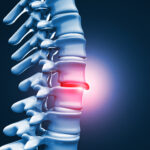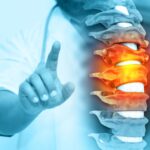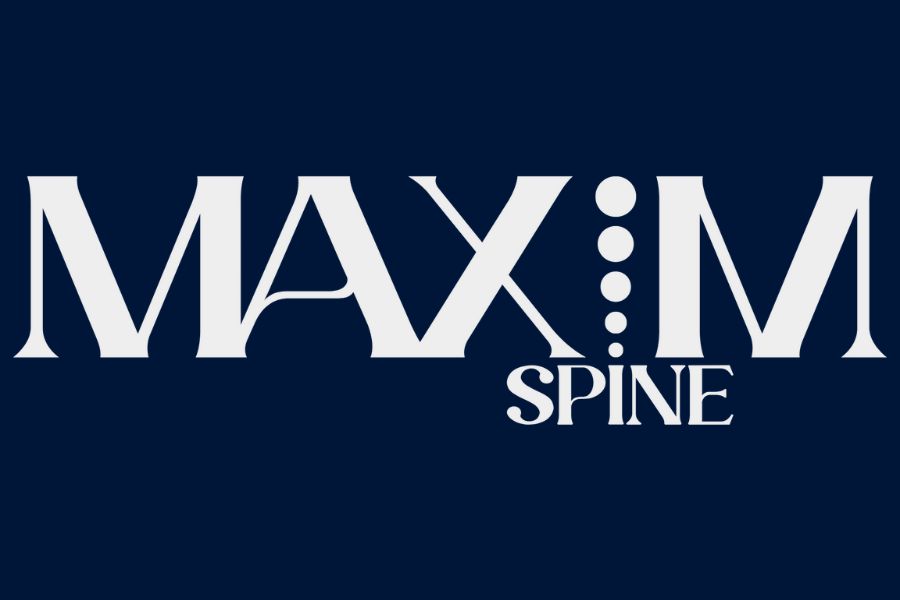
Sacroiliac Dysfunction: Holistic Solutions for Living with Back Pain
Beyond medication and surgery, targeted exercise is one of many holistic solutions for living with back pain and sacroiliac joint dysfunction.
Exercise fortifies your weight-bearing joint and builds mental and physical resilience. By addressing the unique characteristics of the sacroiliac joint, exercises can alleviate pain, enhance stability, and restore mobility.
Your sacroiliac joints connect the spine to your pelvis, playing a critical role in supporting the upper body and facilitating movement. However, dysfunction in these joints can lead to debilitating symptoms, including low back pain, buttock pain, radiating pain, stiffness, numbness, and instability. These symptoms can cause difficulty with walking, bending, lifting, and even sleeping.
While surgical procedures or medications may offer relief, these avenues may carry unwanted side effects. Exercise, on the other hand, provides a well-rounded approach for healing sacroiliac joint dysfunction. By strengthening your muscles that support this joint and promoting proper alignment, exercise directly stabilizes the joint, minimizing pain and improving overall functionality.
Going further, targeted exercises can address the specific needs of men and women, taking into account their differences in joint structure and mobility. Women may benefit from exercises focusing on strengthening the pelvic floor muscles, while men may focus on strengthening their core muscles.
Exercise can also positively impact your mental health, which is important for patients struggling with chronic pain. It eliminates stress, boosts your mood, and increases self-esteem.
Tailored exercises should focus on your individual needs and abilities. A qualified health care professional or spine doctor can help you develop a personalized program that’s safe and effective.
Positive Connection Between Joint Problems and Holistic Solutions for Living with Back Pain
Many individuals in all stages of life have benefited from holistic solutions for living with back pain related to their sacroiliac joint dysfunction. Conditions can arise from a variety of factors, ranging from acute trauma to the natural changes associated with pregnancy and aging.
You first must understand the causes to effectively manage and prevent joint issues. Trauma, whether from a sudden accident or ongoing low-impact injuries, can disrupt joint support. This includes falls, car accidents, sports injuries, and even repetitive movements in certain occupations or activities.
These traumatic events can lead to fractures, ligament tears, or joint instability, all of which can trigger chronic pain and imbalance.
Arthritis and degenerative changes are another significant cause of sacroiliac joint issues, particularly in older adults. Osteoarthritis, the most common type of arthritis, can gradually wear down the cartilage in joints, leading to pain, stiffness, and less mobility. Inflammatory arthritis can especially impact your joints, causing major inflammation.
Pregnancy and childbirth present unique challenges for sacroiliac joints as well. Hormonal changes during pregnancy can increase laxity, making your joints more susceptible to injury. The added weight and postural changes also place extra stress on these joints, as well as the short-term physical trauma of childbirth.
Several other factors can contribute to or exacerbate sacroiliac joint dysfunction. Leg length discrepancies, Scoliosis, previous lumbar fusion surgery, obesity, and a sedentary lifestyles are all associated with an increased risk of joint problems. These factors can alter the biomechanics of your pelvis and spine, leading to uneven stress on sacroiliac joints.
Understanding the causes of joint dysfunction is important for diagnosis and treatment, especially a customized exercise program.
The Importance, Power, and Benefits of Targeted Exercises
Regular and intentional exercise is vital to managing sacroiliac joint pain, offering a unique path under the umbrella of holistic solutions for living with back pain. Different types of exercises contribute to this goal, including:
- Stretching exercises. Hamstring stretches, flexibility stretches, Piriformis Muscle stretches, and lower-trunk rotations increase flexibility and range of motion.
- Strengthening exercises. Core-strengthening exercises that target abdominals and your lower back, glute exercises, and hip exercises can build a strong support system. Stronger muscles provide better balance, minimizing strain.
- Low-impact aerobic exercises. Walking, swimming, stationary cycling, and elliptical training get your heart pumping without putting excessive stress on your joints. This increased blood flow curtails inflammation.
- Stability and balance exercises. The bird-dog pose, pelvic tilts, and single-leg balance exercises challenge your core and refine your balance and coordination. This equates to healthier posture and alignment.
Regular and targeted exercises offer a multi-faceted approach to tackling sacroiliac joint pain. They improve joint mobility and loosen tight muscles, making movement less painful and restricted.
Exercise also strengthens your supporting muscles, creating a durable and reliable core for your joint to function. Low-impact aerobic exercise increases blood flow and aids in the natural healing process. Improved core-muscle strength and balance lead to better posture, minimizing stress on the sacroiliac joint and preventing future flare-ups.
Overall, routine exercise releases endorphins, your body’s natural painkillers. It’s a completely natural way to manage your discomfort.
“A total of 51 patients with lower back or buttock pain resulting from SIJD were randomly assigned to 1 of 3 study groups,” states a National Library of Medicine and Pain Physician Journal study. “All three groups demonstrated significant improvement in pain and disability scores compared to the baseline. Exercise and manipulation therapy appear to be effective in reducing pain and disability in patients with SIJD.”
Lifestyle Exercise Routines and Holistic Solutions for Living with Back Pain
When it comes to holistic solutions for living with back pain and exercise, consistency is key. A regular routine, tailored to your individual needs and abilities, can be your most powerful ally.
All of this requires a balanced approach, prioritizing consistency and gradual progression. You should aim to exercise 3 – 5 times per week, beginning with shorter sessions of 10 – 15 minutes and steadily increasing the duration as your tolerance improves.
Begin with gentle, low-intensity exercises, focusing on proper form and listening to your body. If a particular exercise is painful, stop immediately. As you gain strength and experience less pain, gradually increase repetitions or resistance to challenge your body.
Regular, gentle movement is often more beneficial than sporadic, intense workouts. Take these important safety considerations into account:
- Warm-up: Always start with a gentle warm-up to prepare your muscles and joints for activity.
- Proper form: Ensure correct technique to avoid exacerbating your pain or causing additional injuries. A physical therapist can provide guidance on proper form.
- Pain monitoring: Pay close attention to your body and stop any exercise that increases pain.
- Individualization: Work with a qualified health care professional to develop a personalized exercise program that addresses your specific needs and limitations.
- Complementary treatments: Consider combining exercises with other therapies like massage or chiropractic care for optimal pain relief and improved functionality.
By following these guidelines, you can effectively incorporate exercise into your sacroiliac joint pain management plan. Additionally, consider the benefits of joint manipulation and chiropractic care as well.
“SI joint manipulation provides short-term benefits, whereas the combination of manipulation with exercise programs achieves longer-term results,” states the American Academy of Family Physicians. “Exercise programs play an important role in long-term benefits; therefore, combining both treatment modalities should be considered.”
How Water Workouts Fit into Your Exercise Routine
Holistic solutions for living with back pain also include water workouts, which offer a gentle way to manage sacroiliac joint pain. The buoyancy of water reduces stress on joints, while its resistance provides a tender workout for muscles.
“Exercise in the water removes the impact stress of ground reaction force,” states Creaky Joints. “When joints are inflamed and painful during weight-bearing exercise, working out in the water allows you to experience the advantages of movement without the negative consequence of impact.”
Here are some options to consider:
- Water walking: This low-impact cardio exercise strengthens your muscles used in everyday walking.
- Aquatic therapy exercises: Guided by a qualified instructor, these gentle movements in shallow water focus on strengthening and flexibility.
- Swimming: While not all strokes are ideal, breaststroke and backstroke can be beneficial. They involve less twisting motion compared to freestyle or butterfly.
- Pool exercises: Incorporate exercises like kickboard balance for core strength, leg lifts for hip flexibility, and the superman stretch for lower back relief.
- Water aerobics: Join a structured class that combines cardio and strength training in the water.
- Traction in deep water: Simply letting your legs hang in the deep end of the pool can provide gentle traction for your spine and joints.
- Gentle stretching in water: The water’s buoyancy makes it easier to perform stretches like hamstring stretches, hip adductor stretches, and lower trunk rotations.
Remember to start slow and gradually increase. You should focus on gentle, low-impact movements, avoiding jarring movements. Additionally, opt for a pool with warm water since it helps relax muscles.
Sacroiliac Pain vs. Other Types: Holistic Solutions for Living with Back Pain
While many conditions can cause lower back pain, sacroiliac joint dysfunction comes with distinct characteristics that holistic solutions for living with back pain can target.
Sacroiliac joint pain is typically felt in the lower back and buttocks, often on one side. It can radiate to the hip, groin, or back of your thigh, but it rarely extends below the knee. In contrast, other lower back pain may be more centralized or radiate down your leg, sometimes past the knee.
Pain triggers also vary. Sacroiliac joint pain often worsens with prolonged sitting or standing, standing on one leg, climbing stairs, or transitioning from sitting to standing. Other back pain may be aggravated by different movements or positions, depending on your underlying cause.
Sacroiliac joint pain usually has a specific inciting event or trauma, such as a fall or accident. Other back pain may develop gradually without a clear cause. Sacroiliac joint pain is often described as an aching pain, while other back pain conditions may have different patterns.
Moreover, sacroiliac joint pain rarely causes neurological symptoms like numbness or weakness in your legs. These issues are often felt with herniated discs.
Lastly, your response to treatment is important to monitor. Sacroiliac joint pain often responds well to targeted joint injections or specific physical therapy exercises. Other back conditions may not improve with these specific treatments and may require different approaches.
While these characteristics can help differentiate sacroiliac joint pain from other types of lower back pain, it’s important to remember that symptoms can overlap. A proper medical evaluation is important for an accurate diagnosis and effective treatment plan.
Maxim Health
Looking for holistic solutions for living with back pain? This is where our groundbreaking approach intersects with your needs. Maxim Health is a beacon of innovation.
Our comprehensive focus brings together luminaries in spine surgery for an unparalleled experience in care, expertise, and attention. With an extensive track record of successful and intricate procedures, Maxim is also at the forefront of non-surgical solutions. We help patients regain control of their lives, from non-invasive interventions to the latest advancements in pain relief.












